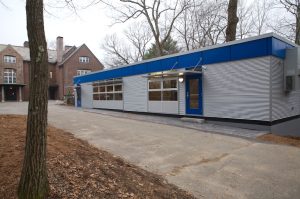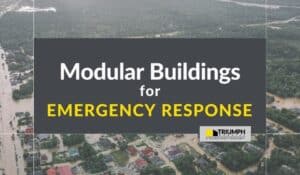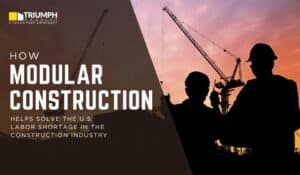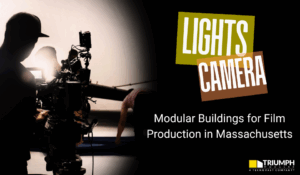More help for relocatable modular buildings coming in the 2018 International Building Code
 First, did you know that relocatable buildings (RB’s) also referred to, as industrialized buildings are different than permanent modular buildings? RB’s are designed and constructed with the primary purpose of being used multiple times and travel from one place to another, including other states.
First, did you know that relocatable buildings (RB’s) also referred to, as industrialized buildings are different than permanent modular buildings? RB’s are designed and constructed with the primary purpose of being used multiple times and travel from one place to another, including other states.
Building Code issues for RB’s (sometimes also referred to as industrialized buildings) can be complex as you might imagine. The Modular Building Institute (MBI) is a voice for the relocatable building industry providing definitions for code officials and participants in this marketplace. RB’s will be handled mostly in updated code sections in the 2018 International Building Code (IBC), under a section called “Existing Buildings”.
We thought it important enough to paraphrase and highlight key points pertaining to relocatable modular buildings that were recently published by the MBI.
- There are approximately 500,000 code-compliant relocatable buildings (RB’s) currently in use in the United States (according to the MBI).
- Educational and general offices are among the highest use groups.
- 35 States have specific regulated administrative programs that oversee newly built modular buildings and relocatable modular buildings.
- The IBC treats a newly constructed RB’s differently than the same building once it is to be relocated. Newly constructed RB’s must meet all current codes. However, moved structures do not have to be brought up to current codes when brought into a new local jurisdiction because the primary purpose of relocation will be more clearly recognized within “moved buildings” within the 2018 IBC.
Did you also know?
HUD-Code manufactured housing is completely different and has its own unique definitions and code issues. People should not confuse Relocatable Modular Buildings with HUD-Code buildings. RB’s are constructed with the same building codes as traditionally built commercial structures. Most commercial buildings are constructed to the International Building Code (IBC).
Aside from specific site and zoning issues, local building code officials when dealing with an RB will locate information on the building’s “Data Plate” to determine compliance with the updated IBC. RB’s must always meet wind, snow, and seismic conditions of where it is located. Lastly, keep in mind the local officials having jurisdiction always have authority under IBC 116.1 to visually inspect for damage to RB’s to see if any noticeable repairs are needed to make the building safe. This section of the code applies to all buildings in the jurisdiction, not just RB’s.
This article is not a restatement of code and should not be used as code guidance. The building codes are complex, with many areas of code touching a project, please seek the proper expert advice when embarking on a building project of any kind.
Finally, keep in mind when speaking of permanent modular or volumetric modular construction, these are words that define a process of permanent construction and do not relate to RB’s or any section of IBC concerning “moved buildings”.




